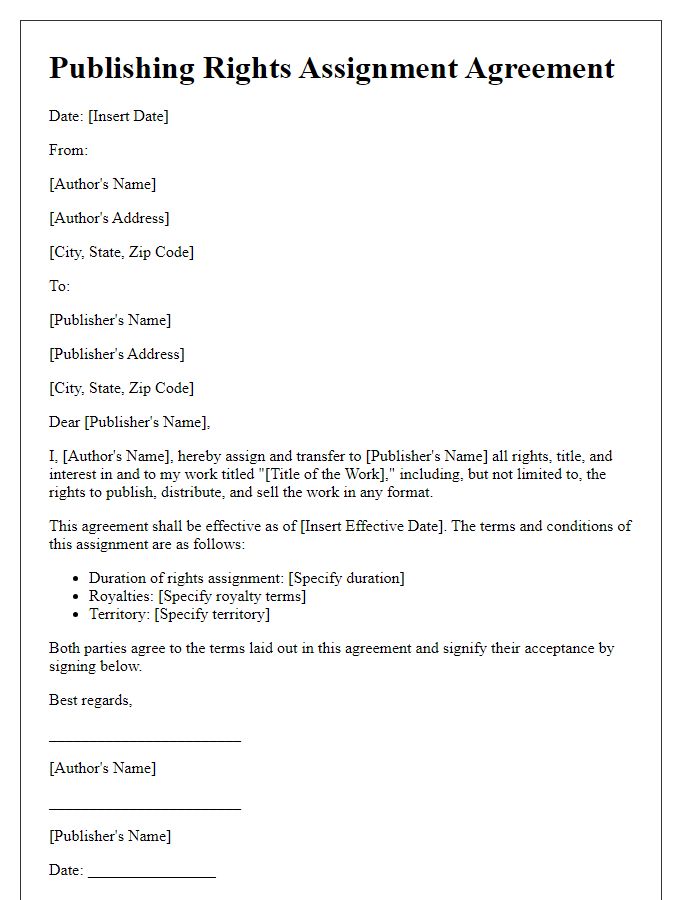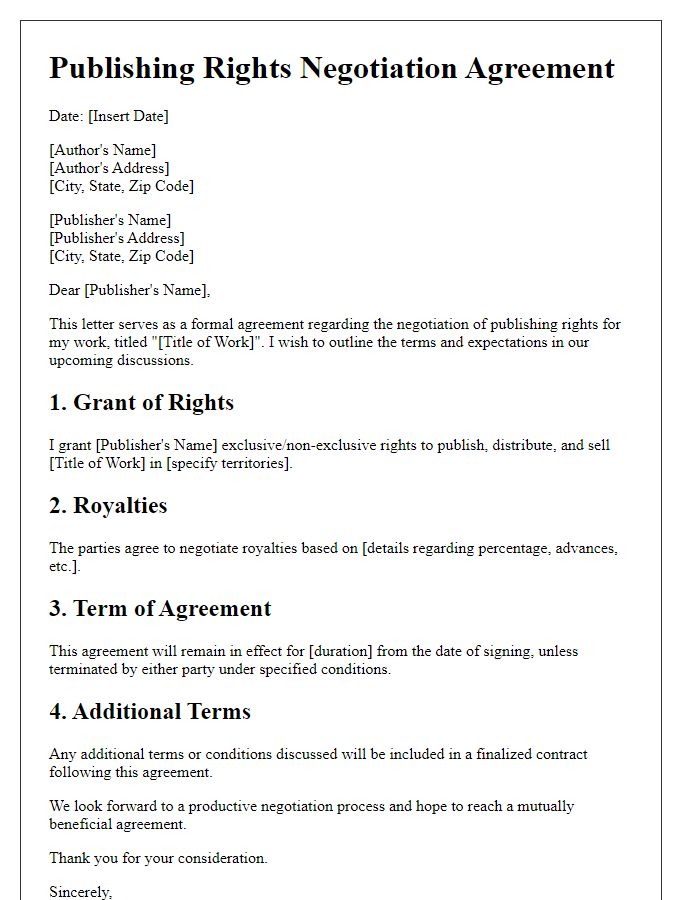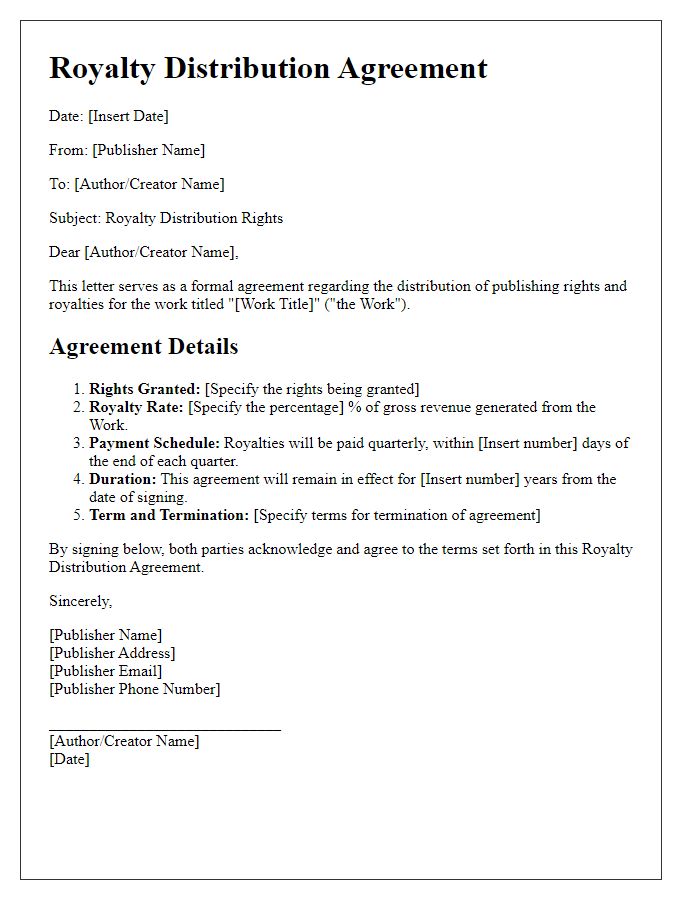Are you considering entering into a publishing rights agreement? Navigating the intricacies of such contracts can be a bit daunting, but having a clear understanding is crucial for both authors and publishers alike. In this article, we'll break down the essential components of a publishing rights agreement and what you need to know before signing on the dotted line. So, grab a cup of coffee and join us as we explore the ins and outs of securing your literary creations!

Grant of Rights
The Grant of Rights section in a publishing rights agreement outlines the specific permissions granted by the author to the publisher concerning the use of the work. The author (noted party), possessing intellectual property rights, transfers the exclusive rights to reproduce, distribute, and sell the literary work, which could include novels, non-fiction, articles, or graphic novels. The publisher (named entity), in return, commits to promoting the work through various channels, including bookstores, online platforms, and literary events. This section should detail the duration of the rights granted, the geographic territories covered, and any financial arrangements such as royalties based on sales performance. Clarity on whether the rights are exclusive or non-exclusive, and provisions for reversion of rights upon termination of the agreement, are critical components. In addition, any restrictions regarding adaptations into other formats (like audiobooks or films) should also be elaborated, ensuring both parties understand their obligations and benefits.
Royalties and Compensation
Publishing rights agreements play a crucial role in defining the terms for royalties and compensation between authors and publishers. Royalties, typically calculated as a percentage of sales revenue, often range from 5% to 15% for print editions and can be higher for ebooks, sometimes reaching 25%. Compensation also encompasses advance payments, which may be paid upfront and can vary significantly based on the author's track record or the publishing house's expected market reach. Specific events, such as the book launch date or notable promotional campaigns, can greatly influence royalty rates. Additionally, clauses regarding subsidiary rights, such as film adaptations or translations, will outline how profits from these avenues are shared, potentially leading to increased revenue for both parties involved.
Duration and Termination
Duration of publishing rights agreements typically spans a defined period, often ranging from one year to a specified number of years, contingent upon the nature of the work and the negotiations between authors and publishers. Publishers usually hold the rights for the duration of the agreement, which can include exclusive or non-exclusive terms. Termination clauses provide mechanisms for authors or publishers to end the contract, often allowing for termination upon written notice under certain conditions, such as failure to publish or breach of contract. The agreement may also stipulate rights reversion, enabling authors to regain publishing rights after specific conditions are met.
Territory and Language
Publishing rights agreements often specify the territory and language in which the work will be distributed. Territory typically refers to specific geographical areas, such as North America, Europe, or Asia. Language refers to the particular languages in which the work will be published, like English, Spanish, or Mandarin. Clear definitions surrounding these terms ensure the publisher understands their rights to publish in certain locations and in specific languages, helping to avoid legal complications and ensure appropriate audience targeting. Details regarding the exclusivity of rights in various territories and languages may also be stipulated.
Author's Warranties and Indemnities
Authors entering a publishing rights agreement must ensure that their works are original and free from any third-party claims. The author guarantees that the manuscript, whether fiction or non-fiction, is not subject to any copyright infringement issues and does not violate any confidentiality agreements, granting the publisher (typically an established company) the right to publish the work without legal disputes. Furthermore, if any claims arise regarding ownership or the integrity of the content, the author agrees to indemnify the publisher against any resulting damages or legal costs, safeguarding the publisher's interests during the publication process. These warranties must be clearly outlined to protect both parties involved in the agreement.













Comments